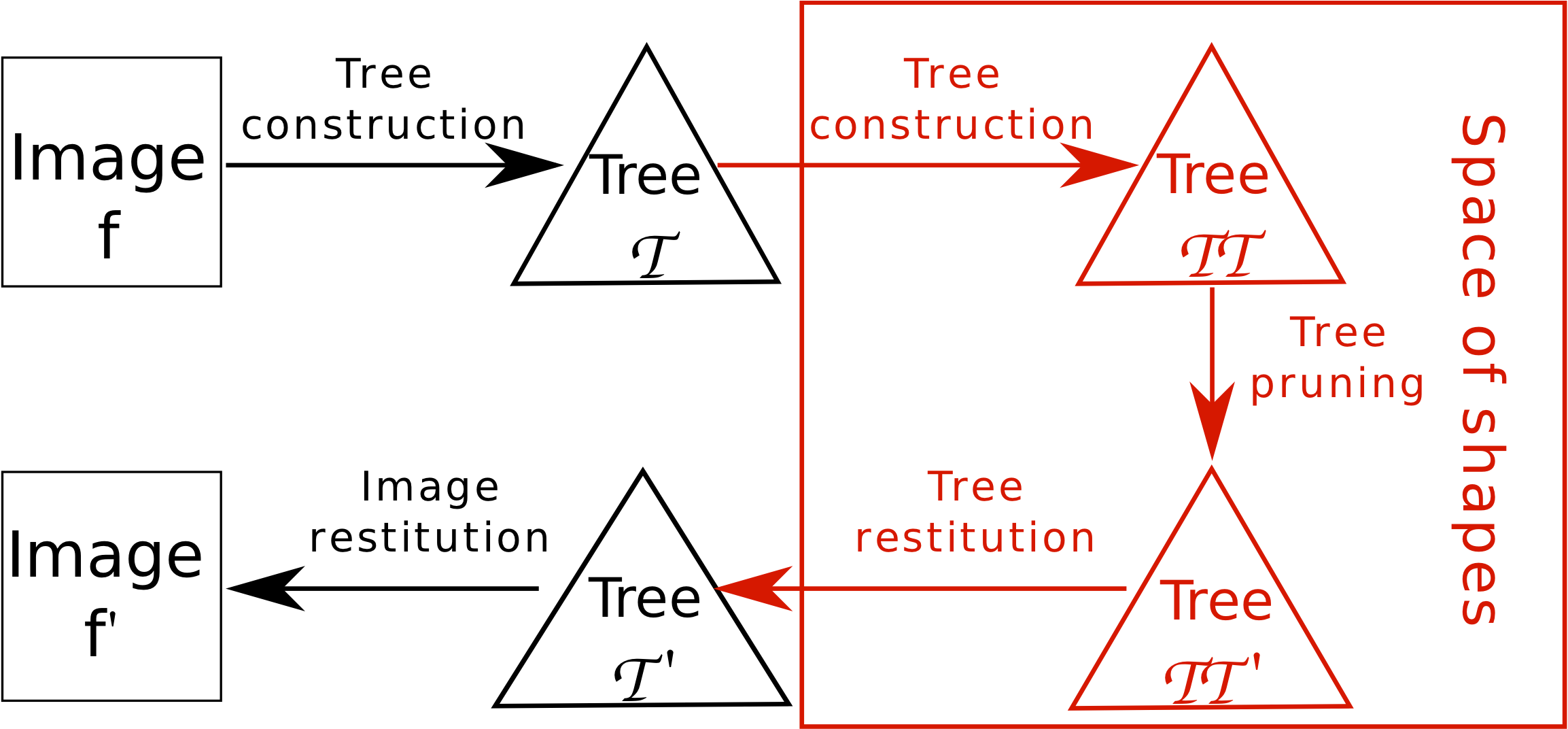
Connected operators are filtering tools that act by merging elementary regions of an image. A popular strategy is based on tree-based image representations: for example, one can compute a shape-based attribute on each node of the tree and keep only the nodes for which the attribute is sufficiently strong. This operation can be seen as a thresholding of the tree, seen as a graph whose nodes are weighted by the attribute. Rather than being satisfied with a mere thresholding, we propose to expand on this idea, and to apply connected filters on this latest graph. Consequently, the filtering is done not in the space of the image, but on the space of shapes build from the image. Such a processing is a generalization of the existing tree-based connected operators. Indeed, the framework includes classical existing connected operators by attributes. It also allows us to propose a class of novel connected operators from the leveling family, based on shape attributes. Finally, we also propose a novel class of self-dual connected operators that we call morphological shapings.
Here is the video of the invited talk I gave at Sibgrapi 2012 the 23 of August 2012. I am a little tense at the beginning, which is strange because I did not felt it at the time. But then, every thing went fine.
A first PAMI paper is available here. It provides the main ideas for using the framework for filtering. A second PAMI paper, focusing on using the proposed framework for saliency maps and hierarchical segmentation, is available here. A PRL paper on hierchical simplification is also available. You might also be interested by TBMR.
You can find slides of the presentation I made at SIBGAPI 2012, Ouro Preto, Brasil,
A conference paper has been accepted at ICPR 2012
Two applications (one practical, the other being more theoretical) are described in a paper accepted at ISMM 2013.
Coming soon!
Object detection based on a context-based energy estimator
Morphological Shaping for round objects
Saliency map based on Mumford-Shah
Shape-based leveling for thin objects filtering